You searched for: 【AG真人官方qee9.com】天天斗地主真人版赢话费是真的吗5a4i9dZ
<< Previous | Displaying results 301-350 of 539 for "【AG真人官方qee9.com】天天斗地主真人版赢话费是真的吗5a4i9dZ" | Next >>
-
Women in the Third Reich
ArticleDespite the Nazi Party's ideology of keeping women in the home, their roles expanded beyond wives and mothers.

-
Kindertransport, 1938–40
ArticleKindertransport refers to a series of rescue efforts between 1938 and 1940 that brought thousands of refugee children to Great Britain from Nazi Germany.
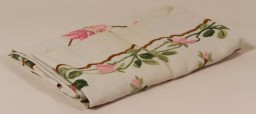
-
Hermann Ludwig Maas
ArticleHermann Ludwig Maas, a Protestant pastor in Heidelberg, Germany, was a rescuer and clergyman who stood in solidarity with the Jewish community.
-
Theresienstadt
ArticleThe Theresienstadt camp/ghetto served multiple purposes during its existence from 1941-45 and had an important propaganda function for the Germans. Learn more.

-
Berlin
ArticleBerlin was home to Germany’s largest Jewish community. It was also the capital of the Third Reich and the center for the planning of the "Final Solution."

-
Hungary before the German Occupation
ArticleTowards the end of 1940, Hungary joined the Axis powers and invaded Yugoslavia and the Soviet Union. Learn more about Hungary before the German occupation.
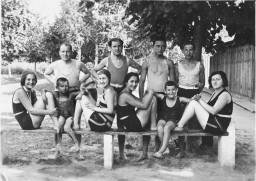
-
Polish Victims
ArticleIn September 1939, the Germans launched a campaign of terror intended to destroy the Polish nation and culture. Learn more about the German occupation of Poland.

-
Polish Jewish Refugees in Lithuania, 1939–40
ArticleLearn more about Polish Jewish refugees that relocated to Lithuania between 1939-1940.
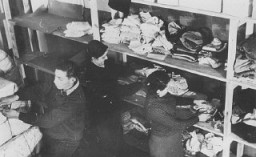
-
Nazi Terror Begins
ArticleAfter rising to power in January 1933, the Nazis began the process of moving Germany from a democracy to a dictatorship. Learn more.

-
Gardelegen
ArticleIn April 1945, US troops encountered a barn on the outskirts of Gardelegen where the SS and its accomplices had massacred over 1,000 concentration camp prisoners.

-
Tower of Sephardic faces: The Jewish community of Monastir, Macedonia
ArticleOn March 11, 1943, over 3,000 of Monastir’s Jews were deported to Treblinka. Learn more about the history of the community and postwar memorialization.

-
The Evian Conference
ArticleAt the July 1938 Evian Conference, delegates from nations and organizations discussed the issue of Jewish refugees fleeing persecution in Nazi Germany. Learn more
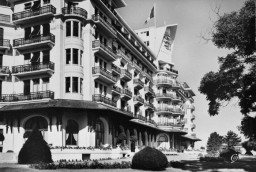
-
Locating the Victims
ArticleThe Germans and their collaborators used paper records and local knowledge to identify Jews to be rounded up or killed during the Holocaust.

-
Mobile Killing Squads
ArticleLearn more about Nazi mobile killing squads (Einsatzgruppen) killing activities in the Soviet Union during World War II.

-
The Survivors
ArticleSurvivors faced huge obstacles in rebuilding their lives after the devastation of the Holocaust years. Learn about some of the challenges they faced.

-
Rescue and Resistance
ArticleWhile some European Jews survived the Holocaust by hiding or escaping, others were rescued by non-Jews. Learn more about these acts of resistance.

-
Jews in Prewar Germany
ArticleJewish people have lived in Germany since the Middle Ages. Learn more about Jewish life, identity, and culture in Germany before the Nazis came to power.
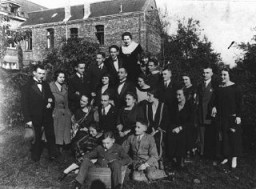
-
Emanuel Ringelblum and the Creation of the Oneg Shabbat Archive
ArticleEmanuel Ringelblum was a Warsaw-based historian and social welfare worker before WWII. Learn about the secret archive he would establish in the Warsaw ghetto.

-
Lebensraum
ArticleThe concept of Lebensraum, “living space,” was as a critical component in the Nazi worldview that drove both its military conquests and racial policy.
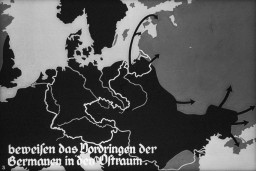
-
Helena Husserlova with her daughter, Zdenka
PhotoIn this portrait, Helena Husserlova, wearing a Jewish badge, poses with her daughter Zdenka who is holding a teddy bear. The photograph was taken shortly before they were deported to Theresienstadt. Zdenka was born in Prague on February 6, 1939. On October 10, 1941, when Zdenka was just two and a half years old, her father was deported to the Lodz ghetto. He died there almost a year later, on September 23, 1942. Following his deportation, Helena and Zdenka returned to Helena's hometown to live with…
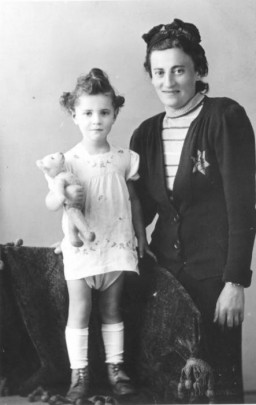
-
German Troops Occupy Hungary
Timeline EventMarch 19, 1944. On this date, Germany occupied Hungary and installed General Dome Sztojay as prime minister.
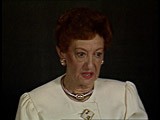
-
Stahlecker Report
Timeline EventOctober 15, 1941. On this date, Walter Stahlecker submitted a report on the killing of Jewish civilians in the northwestern Soviet Union.

-
Auschwitz Through the Lens of the SS: Frankfurt Trial
ArticleKarl Höcker’s album shows him in close contact to the main perpetrators at Auschwitz-Birkenau. Learn about his 1963 trial and the significance of his album.
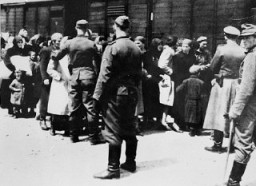
-
The Nazi Rise to Power
ArticleThe Nazi Party was one of a number of right-wing extremist political groups that emerged in Germany following World War I. Learn about the Nazi rise to power.
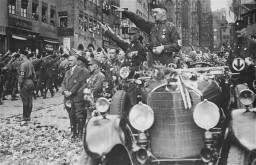
-
Timeline of the German Military and the Nazi Regime
ArticleKey dates illustrating the relationship between Germany’s professional military elite and the Nazi state, and the German military’s role in the Holocaust.
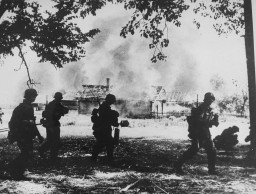
-
The Nazi Party
ArticleThe National Socialist German Worker’s Party, also known as the Nazi Party, was the far-right racist and antisemitic political party led by Adolf Hitler.

-
Paul Eggert, Helga Gross, and Dorothea Buck describe forced sterilization
Oral HistoryPaul Eggert was categorized as "feeble-minded." At age 11, he was institutionalized and sterilized without his knowledge. Helga Gross attended a school for the deaf in Hamburg, Germany. She was sterilized in 1939, aged 16. At age 19, Dorothea Buck was diagnosed as schizophrenic and sterilized without her knowledge. [Photo credits: Getty Images, New York City; Yad Vashem, Jerusalem; Max-Planck-Institut für Psychiatrie (Deutsche Forschungsanstalt für Psychiatrie), Historisches Archiv, Bildersammlung GDA,…
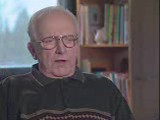
-
David Levine describes hiding his two-year-old nephew during a roundup of children in the Kovno ghetto
Oral HistoryDavid was born to a middle class Jewish family and attended a Jewish school. In August 1941, after the Germans occupied Kovno, he was forced into the Kovno ghetto, where he shared two rooms with his immediate and extended family. Many members of his extended family were killed during the Great Aktion in Kovno in October 1941. David worked in a forced-labor brigade in the ghetto. In March 1944, he witnessed the Kinder Aktion and was able to save his nephew. During the destruction of the Kovno ghetto, David…
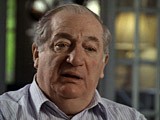
-
France
ArticleLearn about France during the Holocaust and WWII, the liberation of France, postwar trials, and the legacy of Vichy France’s collaboration with Nazi Germany.
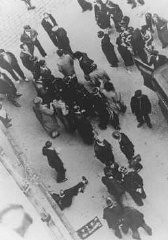
-
The United States: Isolation-Intervention
ArticleWhen WWII began, most Americans wanted the US to stay isolated from the war. From December 1941, the majority rallied in support of intervention to defeat the Axis powers.

-
Peter Somogyi
ID CardPeter and his twin brother, Thomas, were the youngest of three children born to an observant Jewish family. They lived in Pecs, an industrial center where goods such as bricks and ceramics were produced. Peter's father owned a prosperous business selling accessories and parts for cars, motorcycles and bicycles. He was also a regional sales representative for Ford automobiles. 1933-39: A German nanny took care of Peter, Thomas, and their older sister. She taught them German and they became quite fluent.…
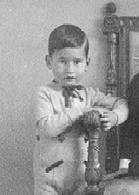
-
Pinchas Galperin
ID CardPinchas was one of 16 children born to a Jewish family. Only nine of the Galperin children lived to adulthood. Pinchas' father worked as a typesetter for a Jewish newspaper and his mother ran a small grocery store. After World War I, Pinchas married Sara Bernstein and the couple moved to Siauliai, Lithuania, where they raised three children. 1933-39: Pinchas and Sara owned and ran a dairy store where they sold milk, butter and cheese that they bought from local farmers. Every morning they would rise early…
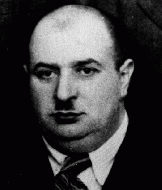
-
Johannes M. Lublink
ID CardJohannes was born to Christian parents and had three brothers and three sisters. His father sold coal for heating systems. By 1933, Johannes was also a coal distributor. Like many other Dutch citizens, Johannes did not approve of Hitler's policies. He especially objected to Hitler's persecution of Jews and Jehovah's Witnesses. 1933-39: Hitler's coming to power in Germany was a threat to all of them. In 1936, Johannes became a Jehovah's Witness. His mother was also a Witness and, by 1938, one brother and…
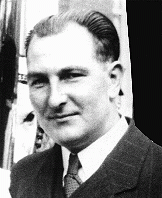
-
Helene Melanie Lebel
ID CardThe elder of two daughters born to a Jewish father and a Catholic mother, Helene was raised as a Catholic in Vienna. Her father died in action during World War I when Helene was just 5 years old, and her mother remarried when Helene was 15. Known affectionately as Helly, Helene loved to swim and go to the opera. After finishing her secondary education she entered law school. 1933-39: At 19 Helene first showed signs of mental illness. Her condition worsened during 1934, and by 1935 she had to give up her…
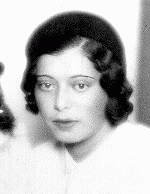
-
Siegfried Wohlfarth
ID CardThe elder of two sons of religious German-Jewish parents, Siegfried grew up in the city of Frankfurt. Upon completing his education, he became a certified public accountant in Frankfurt. In his free time he worked as a freelance music critic. While on a vacation in 1932 on the North Sea island of Norderney, he met Herta Katz, a young woman with whom he quickly fell in love. 1933-39: The Nazis had fired Siegfried from his government job because he was Jewish. Although his mother opposed the match,…

-
Chaim Engel
ID CardChaim's family came from a small town where his father owned a textile store. When antisemitic pogroms broke out in Brudzew, the Engels moved to the industrial city of Lodz. Chaim was then 5 years old. In Lodz he attended a Jewish school that also provided a secular education. After finishing middle school, Chaim went to work at his uncle's textile factory. 1933-39: Chaim's neighborhood in Lodz was predominantly Jewish, so most of his friends were Jews. As a young adult he began his compulsory army…
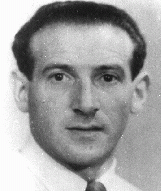
-
Maria Sava Moise
ID CardMaria was one of four children born to poor Roma ("Gypsy") parents in the capital of Moldavia in eastern Romania. The family lived in a mixed neighborhood that included Romanians and Roma. Maria grew up in a house with a yard where the family kept a pig and some chickens. Her father made a living by singing and by working at some of the many wineries that dotted the Moldavian countryside. 1933-39: Maria's parents couldn't afford to send her to school. To help make ends meet, Maria, her sister and older…
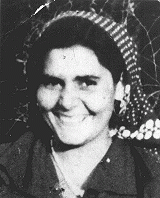
-
Ceija Stojka
ID CardCeija was the fifth of six children born to Roma ("Gypsy") parents who were Roman Catholic. The Stojka's family wagon traveled with a caravan that spent winters in the Austrian capital of Vienna and summers in the Austrian countryside. The Stojkas belonged to a tribe called the Lowara Roma, who made their living as itinerant horse traders. 1933-39: Ceija grew up used to freedom, travel and hard work. Once, her father made her a skirt out of some material from a broken sunshade. She was 5 years old and…

-
Johanna Niedermeier Buchner
ID CardJohanna was born in Vienna when it was still the capital of the Austro-Hungarian Empire. Her Christian family experienced the disruption resulting from the empire's collapse, as well as the instability of the Austrian republic. The depression of 1929 hit Vienna especially hard. In 1931 Johanna became a Jehovah's Witness. 1933-39: Johanna traveled constantly in and out of Austria distributing our Jehovah's Witness literature. In March 1938 Germany annexed Austria and her family was subjected to Nazi law;…
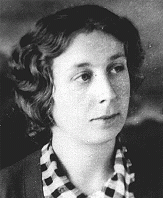
-
Monique Jackson
ID CardMonique's Jewish parents met in Paris. Her father had emigrated there from Russia to study engineering, and her mother had come from Poland as a young child. Monique's father did not have enough money to finish university, so he went to work as an upholsterer. He also shared a small business which sold his hand-tooled leather purses. 1933-39: Monique's mother was 20 when she gave birth to Monique in 1937. Two years later, Parisians were threatened by the possibility of bombing by the Germans, and French…

-
Nelly Adler
ID CardNelly was the youngest of three daughters born to Jewish parents in Liege, a French-speaking industrial city in eastern Belgium. Her Yiddish-speaking parents had moved there from Czechoslovakia a year before Nelly was born. The Adlers were one of only a few Jewish families in the largely Catholic city. Nelly grew up speaking French with her friends at school. 1933-39: The Adler's apartment was above a cafe and across the street from a Catholic church. Her parents ran a successful tailoring business from…
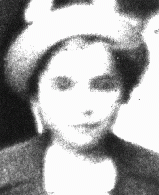
-
Sara Galperin
ID CardSara, born Sara Bernstein, was one of six children in a Jewish family in the Lithuanian village of Karchai. Her father was a farmer. Sara attended secondary school in Jonava and in 1920 she moved to Siauliai, where she met and married Pinchas Galperin. The couple owned and ran a dairy store, selling butter, milk and cheese. They had three children--two sons and a daughter. 1933-39: In addition to running the family store and rising early every morning to buy dairy products from the local farmers, Sara was…
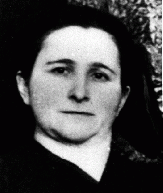
-
Rachela Rottenberg
ID CardThe younger of two children born to Jewish parents, Rachela grew up in Radom, an industrial town located some 60 miles south of Warsaw. One-quarter of the city's 100,000 prewar population was Jewish. Rachela's father was a Zionist and was active in municipal affairs. Her mother did volunteer work. l933-39: Germany invaded Poland on September 1, 1939. On September 5, with the Germans rapidly advancing, Rachela's family sought temporary safety with relatives in Warsaw. They got separated along the way.…

-
Jeno Gabor Braun
ID CardThe son of a rabbi, Jeno was raised in the town of Sighet in Transylvania. The region was multi-ethnic, and Jeno grew up in a family that knew Yiddish, Hungarian, Romanian, German and Hebrew. During World War I, when Sighet was near the front, Jeno's family fled to Hungary. There Jeno met Eszter Mendel, whom he married after the war. The couple settled in the town of Cristuru-Secuiesc in Romania. 1933-39: As a jeweler, Jeno is one of only two watchmakers in Cristuru-Secuiesc; the other is a German who…
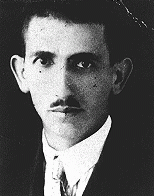
-
Robert Gruber
ID CardRobert was raised by Hungarian-speaking parents in Kosice, a town in eastern Slovakia with a sizable Jewish community of 7,000. The Grubers were a traditional Jewish family and they observed the Jewish Sabbath, dietary laws, and holidays. Robert's father owned a small jewelry shop. 1933-39: When Robert was 5, Kosice was taken over by the Hungarians, who were led by a dictator named Horthy. He stood on the main street with his parents, watching the soldiers march into town in a victory parade. They were…
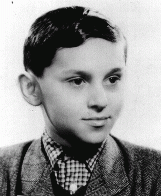
-
Pearl Harbor
ArticleJapan’s aerial attack on Pearl Harbor changed many Americans' attitudes toward involvement in WWII. Learn more about the events, facts, and background info.

-
Ruth Gabriele Silten
ID CardGabriele was the only child of Jewish parents living in the German capital of Berlin. Her grandfather owned a pharmacy and a pharmaceuticals factory, where Gabriele's father also made his living. 1933-39: In 1938 the Nazis forced Ruth's grandfather to sell his factory and pharmacy for very little money to an "Aryan" German. After that, her father decided they should move to Amsterdam where it was safer for Jews. She was 5 years old and wanted to stay in Berlin. She didn't understand why she had to leave…
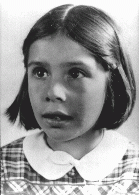
-
Ernst Silten
ID CardErnst was one of five sons born to a Jewish family in the Prussian city of Koenigsberg. He studied pharmacy and earned his doctorate in the late 1880s. Ernst spent several years as an apprentice before buying his own pharmacy in Berlin. Later, he also acquired a pharmaceuticals factory and supplied oxygen to hospitals. He married Marta Friedberg and the couple raised two sons. 1933-39: In Berlin, Ernst and his family lived in an apartment above their pharmacy and factory. In 1938 Ernst was forced to sell…

-
Erzsebet Markovics Katz
ID CardErzsebet was born to Jewish parents living in a town on the Bodrog River in northeastern Hungary. Sarospatak was a picturesque town with a ruined medieval fortress, the Windischgratz castle, and many wineries, flour mills, and brickworks. Erzsebet's father was a locksmith and sheet-metal worker. 1933-39: Erzsebet has married Jozsef Katz. It was a lovely, formal wedding. Jozsef comes from a large Jewish family. He's a joiner by trade and was working in Sarospatak when they met. Now they have moved here to…
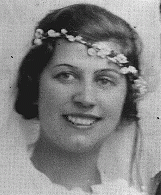
-
Itzik Rosenblat
ID CardItzik, also known as Izak, was one of three sons born to Yiddish-speaking Jewish parents. When Itzik was a young child his family moved to the city of Radom. Itzik left school when he was 11 to apprentice as a women's tailor. After he apprenticed with several tailors in Radom and Warsaw, he went back to school and earned a tailor's license. 1933-39: In 1938 Itzik married Taube Fishman, the daughter of his first employer, after a 13-year courtship much opposed by her family. They lived in Radom, where…

